 Your new post is loading...
 Your new post is loading...
Consumers seem to have fairly clear ideas about brand personalities on social media, and the use of slang isn’t… woke. In a new study from Sprout Social, roughly 1,000 US social media users weighed in on brand personalities, with most feeling that it’s “cool” if brands talk about timely events, but not politics. (In related news, consumers aren’t that interested in brands taking public stances in on social issues.) Meanwhile, respondents are most accepting of the use of video clips (83% seeing this as “cool” rather than “annoying”), though the exploding use of GIFs – which brands starting incorporating in their emails back in 2013 – isn’t met with quite as much fervor (58% approving as “cool”). It stands to reason that most would be happy with brands responding to questions, although separate data from the report suggests that only about one-third of consumer messages on social media in Q1 that needed a response actually got one… Behaviors that more social media users see as “annoying” than “cool” include: Making fun of competitors (67% annoying) and customers (88%); Using slang (69%); and Talking politics (71%).
Let's cut to the chase, your brand is not your logo, your identity or your product. Your brand is the gut feeling an individual has about your product, service or organization. It’s all the unique qualities that make you different, valuable, memorable and trustworthy. It signifies a promise of value, and reflects how your organization emotionally connects with consumers. Crucially, your brand is not what your company says it is, but what your target market says it is....
THEME#7 OF POST SERIES ON HUMANIZING BRAND STORYTELLING
Not all brand stories are created equal. Nor do they have the same social value. The traditional process of brand storytelling that uses advertising, collateral, digital etc., is a process owned and led by a brand/business and their agency partners. Such forms of brand communication will usually attempt to talk “to” people through an out-bound (push) marketing approach (see Theme #2 regarding Mass Media Push).
Contrast this to brand stories born externally, crafted by people about brands, and in collaboration with brands. These stories are usually inspired by direct experiences, emotional connections, and engagement opportunities that allow people to be heard, and/or co-create directly with brands themselves. The outcomes are people-powered brand stories that represent a new form of value, or social currency.
As more than 80% of all online content is now user generated, the value of user generated brand stories will only grow exponentially. The social currency value of content will ultimately depend on the perceived authenticity of the story itself, and the share of human versus manufactured voice, within brand communication....
...Great brands, however, avoid this mistake by conceiving of their brands as strategic platforms. Their brands comprise the values and attributes that define and distinguish the value they deliver to people through entire customer experiences and the way they do business. They use their brands as management tools to fuel, align, and guide everything they do....
...Q: In your new book, Absolute Value: What Really Influences Customers in the Age of (Nearly) Perfect Information (HarperBusiness), you and co-author Emanuel Rosen say marketing needs a total overhaul. Can you explain?
A: For the first time in history, people can assess the absolute value of things they buy. User reviews, price comparison apps and other digital tools mean we can buy things based on almost perfect information, instead of irrational perception. So marketers need to understand what influences this shift in decision making...
Edelman’s new consumer brand study found that an overwhelming majority (90 percent) of people across eight countries want marketers to more effectively share.Many more interesting research and insights for marketing, content marketing and PR pros.
The changing way in which customers review products can be great for business ... or terrible.
You ask a friend where she got her new Macbook Air and she gushes about the selection and service at her local electronics store so much that you decide to check it out next time you're in her neighborhood. Your boss can't decide where to go out to dinner, so you pull up Yelp on your phone and find a nearby restaurant with the highest ratings. Whether you're aware of it or not, both you and the businesses you patronize benefit from brand advocacy.
Brand advocacy is the latest reincarnation of a concept that most of us are quite familiar with: word–of–mouth advertising, individual recommendations, vouching and the like. It relies on advocates promoting brands via personal marketing, which can be as simple as telling a friend verbally or posting on Facebook.
This method is incredibly effective because of a simple – and very, very human – concept: trust. We trust our friends, the Yelp community, particular bloggers or Twitter personalities who share their preferences and influence our decisions accordingly. From the consumer’s perspective, personal testimony is vastly more relatable than pure numbers, and we value reviews over ratings. How often have you looked at a Yelp or Amazon entry without reading the reviews?...
The Starbucks Coffee marketing research department is kept busy providing oodles and oodles of insights into the Starbucks brand through yearly brand audits. And take it from this former long-time Starbucks marketer: The company learns a lot from these studies.
However, when it comes to measuring and managing the Starbucks brand on a daily basis, the Starbucks marketing department generally relies on a much simpler method—a brand checkbook.
Just as your personal checkbook has credits and debits, a brand checkbook has credits and debits in the form of brand credits and brand debits. "Brand credits" are business activities that enhance the reputation and perception people have of a brand, and "brand debits" are those that detract from the reputation and perception of the brand....
|
Everyone knows price matters to consumers, but a new study suggests the lowest price doesn’t always win. Even more important to consumers is the reputation of retailers—and how prices correlate to that brand reputation.
Price Still Matters
This guideline comes from Concordia University’s John Molson School of Business, which does agree that price remains an important factor for businesses. But price is a relative figure that relates to the reputation of a business, and consumers typically gauge whether a price is good based on how it compares to a brand’s reputation.
In other words, a high price isn’t a deterrent to many consumers, as long as it corresponds to a positive reputation. When price and reputation seem misaligned, consumers are turned off....
Last year, I shared Brand Keys' Robert Passikoff's 14 Brand Trends for 2014. This year, Robert again put together his proposed trends for the upcoming year. He again shared his thoughts on the numerology, as well, this time, obviously focusing on 15: In numerology 15 is the combination of the number 1 (representing leadership and forward movement) and the number 5 (numeric for business and finance), thus 15 becomes the fusion of leadership and forward momentum for brands and marketers. Let's see what Robert predicts for the new year.
...Brand is the story you tell and the position you occupy in people's minds. Do they file you under "high-end bespoke couture"—or "fast fashion?"
There are markets and target audiences for everything but it's your job as a business owner or marketing leader to be crystal clear about the image for which you're aiming and how that influences everything from pricing to distribution to customer experience to—yes—visual identity....
James Surowiecki's column in The New York last week, Twilight of the Brands, seemed to suggest that brands are dying. He argued that the usefulness of brands as decreased given that "consumers are supremely well informed and far more likely to investigate the real value of products than to rely on logos.
"His observations about people’s orientation and decision-making are spot on – but I come to a different conclusion. Instead of seeing the current market environment as ushering in the “twilight” of brands, I view it as a call to arms. Brands and brand-building are more important now than ever before.I hold this different – and hopefully more instructive and insightful – perspective because I view a brand as far more than a label or logo.
A brand is the bundle of values and attributes that define the unique value an organization delivers to customers and the unique way the organization operates. A brand is a strategic platform for managing and growing a business....
...What if you could forge a stronger, more emotional tie with that customer? That’s where brand affinity comes in. When you achieve brand affinity, it means your customer has made an emotional connection with your brand. Think of Apple, for example. People wait in line hours for iPhones. Many Apple fans won’t buy any tech gadgets except Apple products. And they’re vocal about them, too. In this instance, consumers aren’t just passionate about a certain product — they’re aspiring to a lifestyle that they think a particular brand represents.
Another example? Alaska Airlines, which consistently rates highly with people who haven’t flown with them because of endorsements of those who do. Or FedEx, which used social media to tell the story of how they helped to transport turtle eggs after the BP oil spill in the Gulf of Mexico, something that forged a strong emotional connection between FedEx and consumers.
Building Brand Affinity Building brand affinity with your consumers is certainly possible, but it’s important to realize that achieving it takes some strategy and planning and it’s not something that can be forced or manufactured....
Why do people do things like that? Barbara Tuchman, the prolific, hugely talented (late) historian wrote a whole book about The March of Folly. Yet smart people keep doubling up. Seriously, would you be inclined to buy into Syria after Iraq and Afghanistan?
"Brand" will always be a nebulous term. Arguments rage about its true value, especially on social media...
Although recent research shows that it can be responsible for nearly 15% of your total worth (Or much, much more, if you’re J.K.Rowling), it’s still seen by many as the ultimate wooly metric. There’s no doubt that being a household name will improve your chances of success in social, but just how far will it take you?
I’ve taken a look at the world’s top ten brands, and matched up their profiles across the biggest social media platforms.Let’s see what’s in a name...
|



 Your new post is loading...
Your new post is loading...

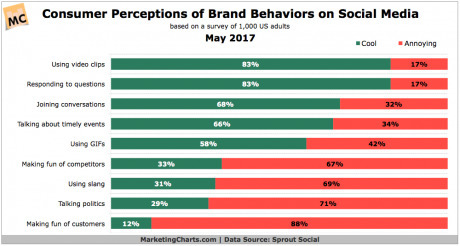

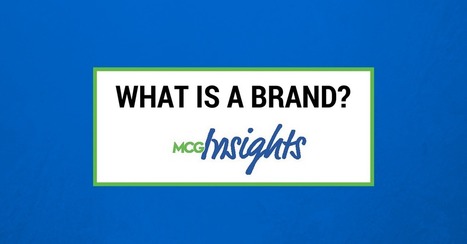





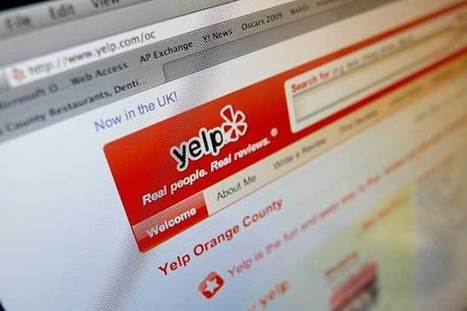
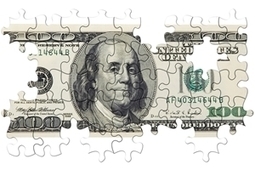






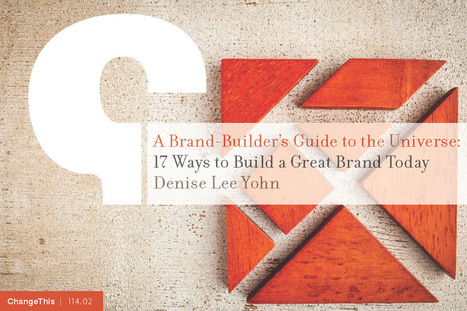




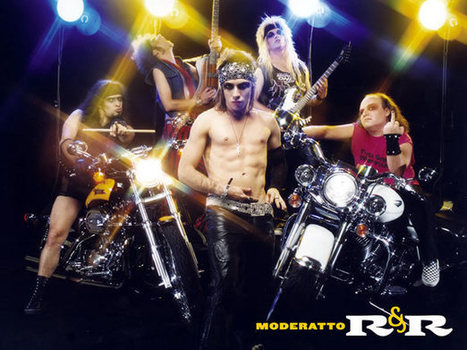





Not cool? Consumers have a message for brands.